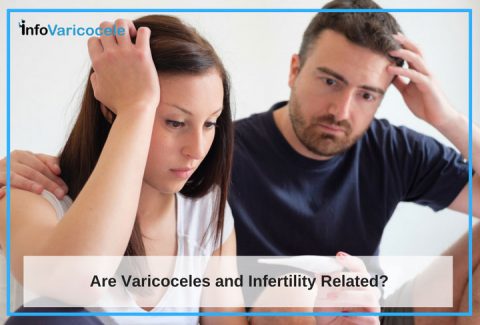
For years, there has been a general misconception about fertility issues — too often, when having difficulty conceiving, couples assume something must be physically wrong with the woman. Many men are shocked to find out that male infertility is not all that uncommon, and they are surprised once they start looking at male infertility statistics. If you’ve recently discovered you’re dealing with male factor infertility, you are probably looking to find out as much information as possible about the issues and causes, and what treatment options are available to you.
Fertility Issues Are Fairly Common
If you and your partner are having trouble getting pregnant, it’s important that you understand what infertility is. Doctors define infertility as the inability to conceive a child after a couple has one year of unprotected sex.[i]
- 1 in 6 couples in the U.S. deal with infertility — that’s nearly 17%.[ii]
- Male factor infertility is the primary medical issue in about 30% of all infertility cases.[ii]
- Male infertility is a factor in 30 – 50% percent of couples trying to get pregnant a second time.[iii]
RELATED: What Causes Male Infertility?
Causes of Male Infertility
There are multiple reasons for male factor infertility. Testosterone levels affect both sexual function and sperm counts. Low semen quality can also have an effect on sperm quality and the ability to impregnate. This is primarily related to an imbalance of free radicals and antioxidants, which is prominent in men who have been diagnosed with what is known as [med term alert] varicocele, a varicose vein in the scrotum.[iv] [v]
- Nearly 50% of men dealing with infertility have low sperm counts as the primary factor. This condition is considered to be the most common cause of infertility.[vi]
- It is believed that one of the primary reasons for a low sperm count is an elevated temperature in the testicles. Typically, the temperature of the groin area should be a couple degrees cooler than the rest of the body to achieve optimum sperm function. Every degree above normal results in approximately a 40% decrease in sperm quality.[vii] [viii]
- 81% of couples having difficulty getting pregnant a second time receive a diagnosis of varicocele as the primary factor in infertility.[ix]
- There are multiple studies linking varicocele to DNA damage in sperm.[x]
Options For Treatment Are Available
Men suffering from male factor infertility due to varicocele have options. There are treatments available with shorter recovery time and less risk than surgery. If you’ve been diagnosed with varicocele, it’s important you understand treatment doesn’t necessarily mean you must have surgery. There is a minimally invasive procedure available known as varicocele embolization you should ask your doctor about.
RELATED: How to Treat Varicocele Infertility without Surgery
- Any of the procedures to correct varicocele can improve chances of pregnancy from 30 – 50%.[xi]
- The pregnancy rate for couples where men have opted for varicocele embolization is up to 50%.[xii] The procedure is becoming increasingly more recognized for its convenience, effectiveness, and cost-efficiency.
- Semen quality usually improves within 3 – 4 months after varicocele treatment. It takes that long for new sperm to grow and thrive in the improved environment that treatment creates.[xiii]
- 60% percent of men will have improved semen quality after undergoing treatment for varicocele. Improved blood flow helps to create a more thriving semen quality where sperm are more active.[xiv]
- It usually takes 6 – 12 months to achieve pregnancy after treatment.[xv]
- Studies have shown it becomes easier to achieve pregnancy the second year after varicocele treatment. This is largely due to continued improvements in both semen and sperm quality as a result of treatment.[xvi]
- A medically facilitated reproduction technique, such as in vitro fertilization or artificial insemination, combined with varicocele treatment, offers to best chance for pregnancy, according to doctors.[xvii]
Using the Facts to Make a Decision
Studies and statistics can offer insight into the causes of and options for male infertility. There is hope for couples experiencing male factor infertility — men can obtain treatment, not only to resolve ongoing problems like pain associated with varicocele, but also to correct long-term issues like infertility. Treatment can improve your quality of life and offer a chance for restoration of fertility.
Sources:
[i] http://www.ncbi.nlm.nih.gov/pmc/articles/PMC2664231/
[ii] http://americanpregnancy.org/infertility/male-infertility/
[iii] https://www.auanet.org/education/guidelines/male-infertility-d.cfm
[iv] http://www.nyp.org/news/hospital/goldstein-varicoceles-testosterone.html
[v] http://www.ncbi.nlm.nih.gov/pmc/articles/PMC3249911/
[vi] http://www.mayoclinic.org/diseasesconditions/varicocele/basics/complications/con-20024164
[vii] http://www.ncbi.nlm.nih.gov/pmc/articles/PMC2664231/
[viii] http://www.parentingweekly.com/preconception/preconception_information/heat_and_male_infertility.htm
[ix] http://www.ncbi.nlm.nih.gov/pmc/articles/PMC2664231/
[x] http://www.ncbi.nlm.nih.gov/pubmed/22809864
[xi] http://varicoceles.com/f-a-q-s/
[xii] http://www.steadyhealth.com/articles/varicocele-embolization
[xiii] http://infertility.about.com/od/causesofinfertility/a/Varicocele-And-Infertility.htm
[xiv] http://www.urologyhealth.org/urologic-conditions/varicoceles/after-treatment
[xv] http://infertility.about.com/od/causesofinfertility/a/Varicocele-And-Infertility.htm
[xvi] http://www.urologyhealth.org/urologic-conditions/varicoceles/after-treatment
[xvii] http://www.webmd.com/infertility-and-reproduction/varicocele-repair-for-infertility


